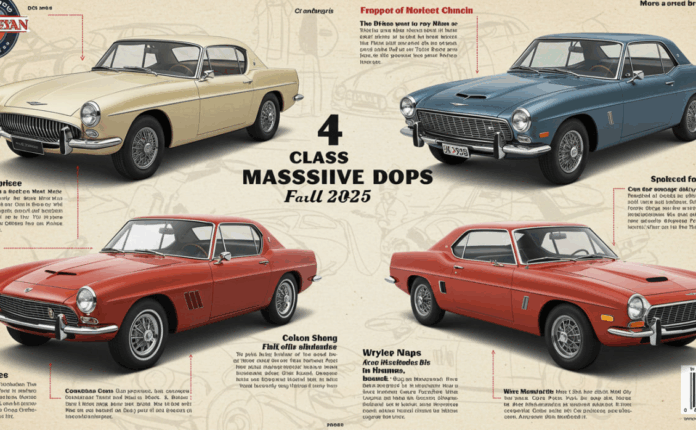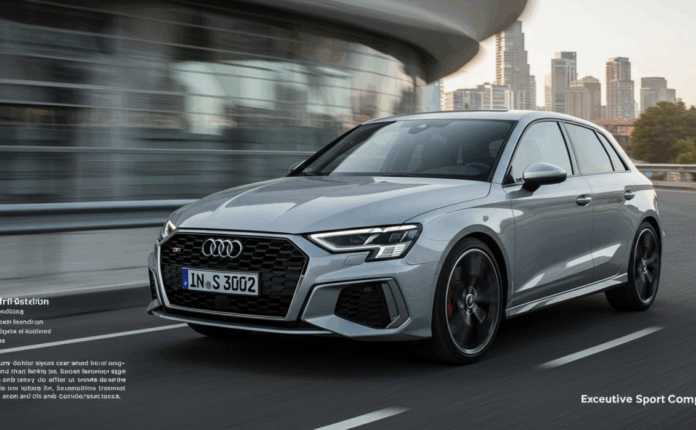In the annals of automotive history, few names resonate with the same reverence as Henry Martyn Leland. A machinist, inventor, and visionary, Leland’s contributions to the industry extend far beyond the iconic Cadillac brand. While Cadillac’s gleaming crest and reputation for luxury are synonymous with his name, Leland’s genius also gave birth to another American automotive titan: Lincoln. This blog post delves into the remarkable story of Henry Leland, exploring how his relentless pursuit of precision engineering and quality craftsmanship shaped not one, but two legendary car brands that continue to define American luxury. Buckle up as we journey through Leland’s life, his innovations, and the enduring legacy of his work in the automotive world.
The Early Days of a Precision Pioneer
A Foundation in Craftsmanship
Born on February 16, 1843, in Barton, Vermont, Henry Leland grew up in a world where precision was paramount. His early career in the firearms industry, including stints at Colt and Brown & Sharpe, honed his expertise in machining and metallurgy. These experiences instilled in him a deep appreciation for interchangeable parts—a concept that would later revolutionize automotive manufacturing. By the time Leland arrived in Detroit in 1890, he was already a master of his craft, ready to leave an indelible mark on the burgeoning automobile industry. His company, Leland & Faulconer, initially supplied high-quality transmissions and engines to Ransom E. Olds, setting the stage for Leland’s entry into the world of car manufacturing.
The Birth of Cadillac
In 1902, Leland’s path took a pivotal turn when he was called upon to appraise the assets of the failing Henry Ford Company. Rather than liquidate, Leland saw potential in the company’s designs and proposed a bold alternative: reorganize and build a new car using his single-cylinder engine, originally developed for Oldsmobile. The investors agreed, and on August 22, 1902, the Cadillac Automobile Company was born, named after Antoine de la Mothe Cadillac, the French explorer who founded Detroit. Under Leland’s leadership, Cadillac introduced groundbreaking innovations, including the use of interchangeable parts, which earned the brand the prestigious Dewar Trophy in 1908 after a dramatic demonstration in London. Three Cadillacs were disassembled, their parts scrambled, and reassembled, all performing flawlessly in a 500-mile test—a testament to Leland’s commitment to precision.
Lincoln: A Second Act of Innovation

From War Efforts to Luxury Cars
Leland’s tenure at Cadillac ended in 1917 after a disagreement with General Motors’ founder, William C. Durant, over producing aircraft engines for World War I. Undeterred, Leland, then 73 years old, founded the Lincoln Motor Company to fulfill a $10 million government contract for Liberty V-12 engines. When the war ended, Leland pivoted to luxury automobiles, naming the company after his hero, Abraham Lincoln, for whom he had voted in 1864. The Lincoln Model L, introduced in 1920, was a marvel of engineering, featuring a V-8 engine influenced by the Liberty engine’s design. However, its dated styling and a sluggish postwar economy led to financial struggles, and by 1922, Lincoln faced insolvency.
The Ford Connection
In a twist of fate, Lincoln was acquired by Henry Ford’s Ford Motor Company in 1922 for $8 million—a price Leland felt was unfairly low, given the company’s estimated $16 million value. Ford’s purchase was partly motivated by a long-standing grudge against Leland, who had turned Ford’s failed company into Cadillac two decades earlier. Despite initial hopes of retaining control, Leland and his son Wilfred clashed with Ford’s team, leading to their resignation. Nevertheless, Lincoln endured, evolving into a symbol of American luxury under Ford’s stewardship, a legacy that continues to thrive today.
Leland’s Lasting Impact on the Automotive Industry
Innovations That Set Standards
Leland’s contributions extended beyond founding two iconic brands. His emphasis on interchangeable parts laid the groundwork for modern mass production, earning praise from General Motors’ president Alfred P. Sloan, who credited Leland as a pioneer of this technique. Cadillac’s 1912 introduction of the electric self-starter, developed with Charles Kettering, eliminated the dangerous hand-crank method, making cars more accessible and safer—especially for women drivers. This innovation won Cadillac a second Dewar Trophy in 1913. Leland’s V-8 engine designs for both Cadillac and Lincoln set new benchmarks for power and performance, cementing his reputation as the “Grand Old Man of Detroit.”
A Legacy Overshadowed

Despite his monumental achievements, Leland’s name remains less recognized than contemporaries like Henry Ford or Preston Tucker. His grave in Detroit, marked by a simple brass plaque, lies in disrepair, and neither Cadillac nor Lincoln actively honors his contributions. Ford’s lingering resentment and Cadillac’s reluctance to celebrate the founder of a rival brand have contributed to this oversight. Yet, Leland’s philosophy of “Craftsmanship a creed, accuracy a law” continues to echo in the precision and luxury of the vehicles his companies produce.
Why Leland’s Story Matters Today
In an era of rapid technological advancement, Leland’s story serves as a reminder of the power of vision and perseverance. His ability to transform a failing company into Cadillac and later create Lincoln against all odds speaks to the ingenuity that drives progress. For car enthusiasts and tech aficionados, Leland’s innovations—interchangeable parts, electric starters, and powerful V-8 engines—represent foundational milestones in automotive engineering. As Cadillac and Lincoln continue to innovate with electric vehicles like the Cadillac Lyriq and Lincoln’s electrified lineup, they carry forward Leland’s legacy of blending luxury with cutting-edge technology.
FAQs About Henry Leland and His Car Brands
Who was Henry Leland?
Henry Martyn Leland (1843–1932) was an American machinist, engineer, and automotive entrepreneur who founded Cadillac in 1902 and Lincoln in 1917. His focus on precision engineering and interchangeable parts revolutionized the automotive industry.
What innovations did Henry Leland introduce?
Leland pioneered the use of interchangeable parts, earning Cadillac the Dewar Trophy in 1908. He also introduced the electric self-starter in 1912 and developed V-8 engines for both Cadillac and Lincoln, setting new standards for performance and safety.
Why did Leland leave Cadillac?
Leland left Cadillac in 1917 after a dispute with General Motors’ founder, William C. Durant, who opposed producing aircraft engines for World War I. Leland then founded the Lincoln Motor Company to fulfill this contract.
How did Lincoln end up with Ford?
Lincoln faced financial difficulties due to a postwar economic slump and dated styling. In 1922, Ford Motor Company acquired Lincoln for $8 million, a move partly driven by Henry Ford’s desire to settle old scores with Leland.
Why isn’t Henry Leland more famous?
Despite founding two iconic brands, Leland’s legacy is overshadowed by figures like Henry Ford. Neither Cadillac nor Lincoln prominently honors him, possibly due to Ford’s resentment and Cadillac’s reluctance to celebrate the founder of a rival.
How do Cadillac and Lincoln reflect Leland’s vision today?
Both brands continue to embody Leland’s commitment to luxury and innovation. Cadillac’s electric Lyriq and Lincoln’s modern lineup blend advanced technology with premium craftsmanship, echoing Leland’s original philosophy.



